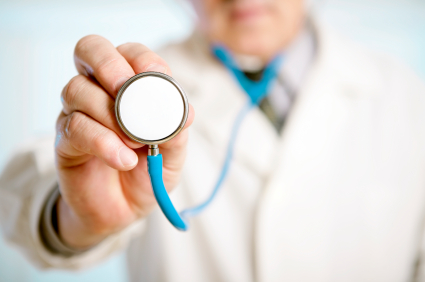 More than ever, it’s essential for hospitals and health providers to rethink their healthcare marketing mix to include social media.
More than ever, it’s essential for hospitals and health providers to rethink their healthcare marketing mix to include social media.
The proof is in the numbers: 34% of consumers use social media to search for health information, according to research data from How America Searches: Health and Wellness.
While it’s easy to identify demand, many healthcare marketers are not exactly sure how they might tap into the social web to reach business goals. To help understand the possible applications, consider these five examples of how the social web can work for hospitals and others in the healthcare industry:
1. Tweet Live Procedures
In the past year, social media channels have helped open up an area of healthcare previously only available to a select few: the operating room.
Last February, Henry Ford Hospital became one of the first hospitals to Tweet a live procedure from an operating room. Doctors, medical students and curious non-medical personnel followed along as surgeons tweeted short updates on the kidney surgery to remove a cancerous tumor.
This healthcare marketing tactic can effectively create excitement and raise public awareness for a healthcare organization. In the case of the Henry Ford procedure, Twitter was abuzz that February day with users both re-tweeting the messages from Henry Ford and adding their own thoughts on the event. That buzz can help healthcare organizations both attract new patients and recruit medical personnel.
2. Train Medical Personnel
Some healthcare organizations are beginning to recognize the potential impact of leveraging social media channels to complement training efforts. Mayo Clinic Social Media Manager Lee Aase, for example, incorporated social media into a recent training presentation for local chapters of the American Heart Association. (Check out Lee Odden’s social media interview with Aase for Online Marketing Blog.) During the presentation, Aase leveraged Twitter to encourage participants to contribute to the discussion using the #AHAchat hashtag.
Weaving social media into healthcare training initiatives can provide multiple benefits, including:
- Giving trainees a forum to ask questions and quickly receive answers
- Providing presenters with immediate feedback from trainees (i.e., if trainees have mastered a concept of if more guidance is needed)
- Enabling organizations to complement healthcare marketing efforts by sharing slideshows, video or pictures from training sessions on social sites like YouTube or Flickr
3. Reach Mainstream Media
70% of journalists now use social networks to assist reporting, compared to 41% the year before, according to a Middleberg Communications survey reported by PRWeek. With numbers that high, it only makes sense for healthcare marketers to leverage social media channels in order to achieve coverage by both mainstream media and industry publications.
As part of healthcare marketing efforts, organizations can use social media channels – including blogs, forums and microblogs – to share success stories from out-of-the-ordinary operations or treatments, medical research or other significant achievements. For example, when Aurora Health Care tweeted a knee operation in April, it received significant media attention, both from mainstream media and industry publications including Good Morning America, the local Milwaukee public radio network and Hospital Management Magazine.
4. Communicate in Times of Crisis
When disaster strikes – whether it be a flood, an earthquake or a terrorist attack – hospitals and healthcare providers are at the center of it all. Healthcare providers can leverage social media networks to provide real-time updates both for those directly affected by the crisis and those watching from afar.
During the November Fort Hood shooting attack, Steven Widman of Scott & White Healthcare – one of the hospitals that treated Fort Hood victims, used Twitter to provide up-to-the-minute news. Through Twitter, Widman provided updates on emergency room access and hospital operation status, re-tweeted news from Red Cross and communicated with reporters.
Widman shared with Found In Cache Blog the results of the social media crisis communication efforts:
- Twitter followers increased 78% in just three days
- Scott & White Healthcare was listed on the front page of Twitter as a “trending topic”
- The hospital’s YouTube channel was ranked the 79th most viewed non-profit channel during the entire week surrounding the crisis
5. Provide Accurate Information to Patients
73% of patients search for medical information online before or after doctors visits, according to this video from the HealthCare New Media Conference. With the magnitude of health information available on the web – both accurate and inaccurate – it’s likely that these patients can easily be misinformed.
By integrating social media into the healthcare marketing mix, organizations can share accurate, timely information regarding symptoms, diseases, medications, treatments and more. Social sites like Inspire are providing a forum for patients to share their health problems and questions about treatments with other patients, as well as qualified medical personnel. Inspire, for instance, partners with trusted health nonprofit organizations to ensure information is accurate and its community is safe.
The benefits of integrating social media into healthcare marketing efforts are priceless – from improving patient care to gaining media coverage to attracting new patients and staff. If your healthcare organization hasn’t already taken advantage of social networking channels, now is the time. If you’re having challenges getting approval, check out “Social Media in Healthcare Marketing: Making the Case“.
How else can healthcare marketers leverage social media to complement their efforts?


